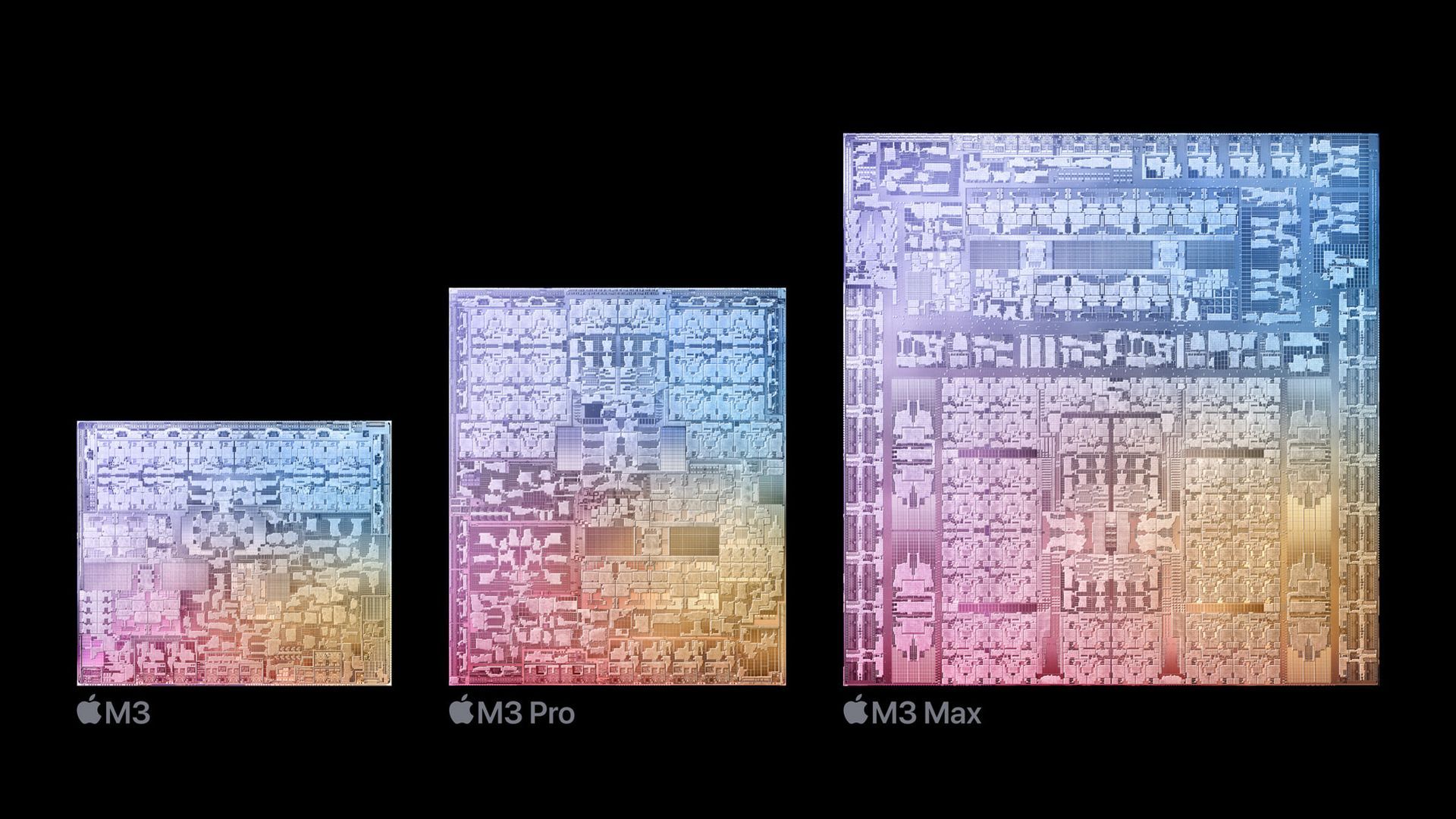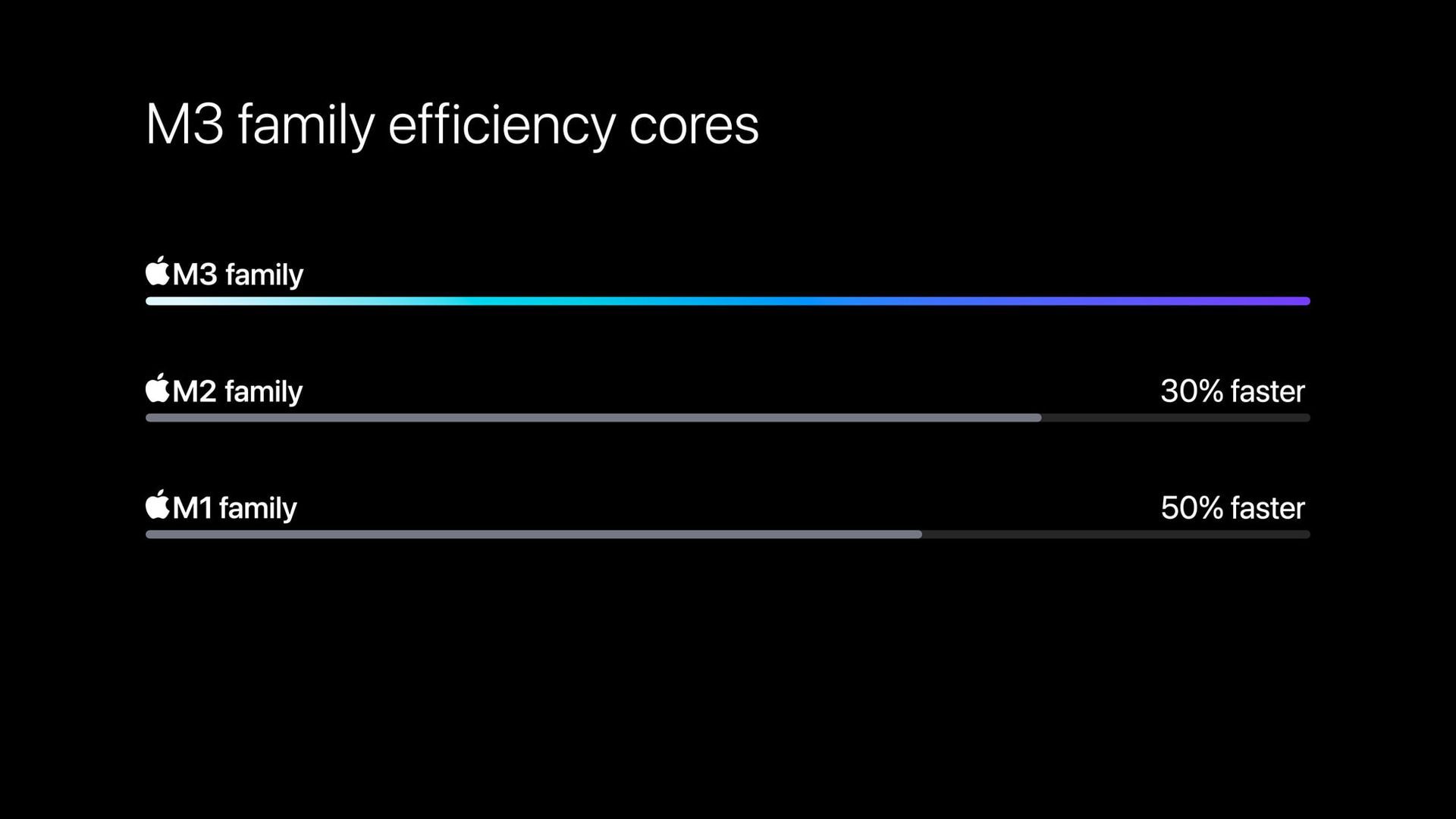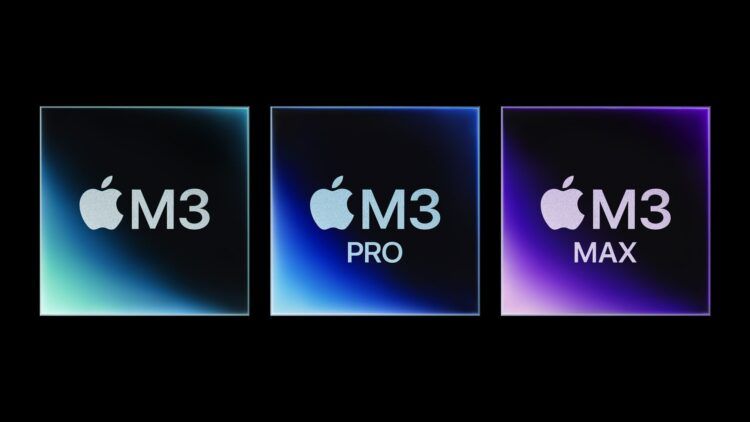The Scary Event brings M3, M3 Pro, and M3 Max chips, the crown jewels of Apple’s silicon engineering. These chips mark a breakthrough in personal computer technology, as they are the industry’s first 3-nanometer chips for a personal computer.
What sets these chips apart is not just their sleek design, but the transformative features that promise to redefine the standards for your personal computing experience. So, fasten your seatbelts as we embark on an enlightening journey into the world of M3, M3 Pro, and M3 Max, the true gems of Apple’s technological innovation.

What to expect from M3, M3 Pro, and M3 Max?
The M3, M3 Pro, and M3 Max are a trio of powerful chips introduced by Apple, designed to push the boundaries of computing performance and efficiency. Let’s explore each of them in detail:
- M3 Chip:
- The M3 chip is the entry-level model in the series, yet it packs a serious punch.
- It features a 10-core GPU with a next-generation architecture, offering 65% faster graphics performance than its predecessor.
- With an 8-core CPU (comprising four performance cores and four efficiency cores), it provides a 35% boost in CPU performance.
- The M3 chip supports up to 24GB of unified memory, ensuring smooth multitasking and efficient workflows.
- M3 Pro Chip:
- Stepping up the game, the M3 Pro chip is designed for users with more demanding workloads.
- It boasts a powerful 18-core GPU, delivering up to 40% faster graphics performance compared to the M1 Pro model.
- With support for up to 36GB of unified memory, it can handle larger projects and more complex tasks on the go.
- The 12-core CPU, featuring six performance cores and six efficiency cores, ensures exceptional single-threaded performance.

- M3 Max Chip:
- The M3 Max chip is the pinnacle of this series, offering unparalleled performance for the most demanding professional tasks.
- It features a 40-core GPU, delivering a 50% boost in graphics performance over the M1 Max chip.
- With support for up to 128GB of unified memory, it’s an ideal choice for AI developers working with large transformer models.
- The 16-core CPU, with 12 performance cores and four efficiency cores, provides astonishing performance that’s up to 80% faster than the M1 Max.
In summary, the M3 series caters to a wide range of users, from everyday tasks to graphics-intensive workloads. Whether you’re a casual user, a professional content creator, or a machine learning programmer, there’s an M3 chip tailored to meet your specific needs. These chips represent a significant advancement in Apple’s silicon technology, setting new standards for performance, efficiency, and memory capabilities.
M3 series’ differences from older generations
The new Apple M3 chips represent a significant leap in performance and capabilities compared to their predecessors, such as the M1 and M1 Pro/Max chips. Here are some key differences that set the M3 chips apart:
- 3-nanometer technology: The most striking difference is the manufacturing process. The M3 chips are the first for personal computers to be built using a cutting-edge 3-nanometer technology. This allows for more transistors to be packed into a smaller space, resulting in improved speed and efficiency.
- Next-generation GPU: The M3 chips feature a next-generation GPU architecture that is significantly more powerful and efficient. This GPU offers hardware-accelerated ray tracing, dynamic caching, and mesh shading, providing a major leap in graphics performance and capabilities.
- Dynamic caching: The introduction of Dynamic Caching is a game-changer. It allows the GPU to allocate memory in real time, using only the exact amount needed for each task. This feature dramatically increases GPU utilization and performance for demanding professional applications and games.
- Memory support: The M3 Max chip, in particular, stands out with support for up to 128GB of unified memory. This expanded memory capacity opens doors for handling larger and more complex tasks, making it ideal for professionals working with AI, 3D modeling, and video editing.
- CPU performance: Both the CPU performance cores and efficiency cores in the M3 chips have seen improvements. The performance cores are up to 30% faster than those in the M1, while the efficiency cores are up to 50% faster. This enhances both single-threaded and multi-threaded performance.

- Neural engine: The M3 series features an enhanced Neural Engine that is up to 60% faster than its M1 counterpart. This boosts the performance of machine learning (ML) models, making AI/ML workflows faster and more efficient.
- Media engine: An advanced media engine in the M3 chips provides hardware acceleration for various video codecs, including AV1 decoding. This results in more efficient and high-quality video playback from streaming services.
- Memory architecture: The unified memory architecture in the M3 chips ensures high bandwidth, low latency, and unmatched power efficiency. It reduces the need to copy data between multiple memory pools, improving overall performance and efficiency.
- Battery life: Despite the significant performance improvements, the M3 chips maintain Apple’s legendary power efficiency. This results in impressive battery life, with up to 22 hours of usage on the new MacBook Pro models.





